TickerTape
Weekly Global Stablecoin & CBDC Update

This Week’s Stories
- BNR Launches Retail CBDC Ideathon
- Botswana Begins CBDC Feasibility Study
- Vietnamese Digital Asset Market Resolution
- CNBC Issues Crypto Warning
- BCTL and Montran Partner for CBDC
- Survey Reveals Concerns Over Stablecoin Competition
- US Neobank Launches Stablecoin with Stripe’s Bridge
- MetaMask to Launch USD Stablecoin with Stripe
- EBA Drafts Crypto-Asset Exposure Standards
- IMF: CBDC Limited Connectivity Solutions
- Ripple Acquires Rail
- HK’s Stringent KYC Rules for Stablecoins
- KakaoBank Joins Stablecoin Market
- Corpay Partners with Circle
The National Bank of Rwanda launched a retail CBDC ideathon on, inviting individuals, fintechs, startups, and innovators to contribute ideas for shaping Rwanda’s digital currency future. The initiative, conducted in collaboration with German tech firm Giesecke+Devrient, falls under the proof-of-concept phase of CBDC development—the second of five stages outlined by the International Monetary Fund. BNR is currently conducting closed-loop testing with commercial banks and merchants, evaluating features including offline payment capabilities, USSD access for feature phones, and cybersecurity compliance. The central bank has identified four “sweet spots” for CBDC implementation: resilience against disruptions, spurring innovation and competition in mobile money markets, creating a cheaper cashless system, and enhancing financial inclusion. The five-month project expects results by October 2025.
Key Takeaways:
- Rwanda launches retail CBDC ideathon, seeking innovation input from tech community
- Currently in proof-of-concept phase with closed-loop testing involving banks and merchants
- Four key focus areas: disruption resilience, market competition, cost reduction, and financial inclusion
- Project timeline spans five months with results expected by October 2025
- Partnership with German security firm Giesecke+Devrient for technical expertise
- Testing offline functionality and USSD access for feature phones to enhance rural accessibility
Why It Matters:
- Demonstrates continued African leadership in CBDC development despite U.S. federal ban on retail CBDCs
- Shows focus on financial inclusion and rural accessibility through offline and basic phone functionality
- Could serve as model for other developing nations pursuing similar digital currency initiatives
- Reflects Rwanda’s broader strategy to establish itself as regional fintech hub in East Africa
- May influence cross-border payment systems and regional monetary integration efforts
- Highlights importance of public-private partnerships in CBDC development and implementation
The Bank of Botswana is in the initial stages of a feasibility study to evaluate the potential launch of a central bank digital currency. This preliminary assessment forms part of the country’s broader effort to integrate emerging financial technologies into its monetary framework, aligning with global trends of central banks exploring digital currency options. The proposed CBDC could enhance efficiency and inclusiveness of Botswana’s financial system by providing secure, transparent, and accessible transaction means, particularly in rural areas where traditional banking infrastructure is limited. The feasibility study will involve detailed analysis of technical, legal, and economic considerations, including evaluating necessary infrastructure, developing regulatory frameworks, and understanding potential impacts on existing financial institutions and consumers. Cybersecurity will be a key focus area as the bank aims to implement robust safeguards.
Key Takeaways:
- Bank of Botswana is in the initial stages of a CBDC feasibility study, for comprehensive evaluation
- Focus on enhancing financial inclusion and efficiency, particularly in underserved rural areas
- Study will analyze technical, legal, economic, and cybersecurity considerations comprehensively
- No final implementation decisions made yet, emphasizing measured and tailored approach
- Seeks input from financial institutions, technology partners, and public for stakeholder alignment
- Part of broader commitment to modernizing financial ecosystem and international engagement
Why It Matters:
- Adds to growing number of African nations exploring CBDC implementation for financial inclusion
- Demonstrates commitment to addressing rural banking infrastructure limitations through digital innovation
- Shows measured approach to CBDC development with comprehensive stakeholder consultation
- Could influence other Southern African Development Community nations’ digital currency strategies
- Reflects global trend of central banks exploring CBDCs despite regulatory uncertainties in major economies
- May enhance regional payment integration and cross-border transaction efficiency
Vietnam’s State Securities Commission announced on August 2, 2025, that the draft resolution on piloting the country’s digital asset market is being finalized and expected to be submitted to the government within August. The resolution will allow establishment of enterprises providing tokenized digital asset services, with regulatory bodies imposing stringent requirements on participants, particularly regarding information technology infrastructure and Level 4 cybersecurity standards—Vietnam’s highest digital security classification. Companies seeking to operate digital asset exchanges must have minimum charter capital of VND10 trillion ($381.34 million), three times the capital required for commercial banks and 33 times more than airlines. The SSC clarified that digital assets will not be recognized as legal payment means, with Vietnam recognizing only the Vietnamese dong as legal currency, focusing instead on regulating trading and transfer activities per FATF anti-money laundering recommendations.
Key Takeaways:
- Vietnam finalizes digital asset market resolution for government submission within August 2025
- Requires VND10 trillion minimum capital for digital asset exchanges, exceeding banking requirements
- Mandates Level 4 cybersecurity standards, Vietnam’s highest digital security classification
- Digital assets not recognized as legal tender, focusing on trading and transfer regulation
- Compliance with FATF anti-money laundering recommendations for regulatory framework
- Creates pathway for tokenized asset services under strict regulatory oversight
Why It Matters:
- Represents significant Southeast Asian regulatory development for digital asset market structure
- Demonstrates high regulatory standards with capital requirements exceeding traditional banking
- Shows commitment to anti-money laundering compliance and international regulatory alignment
- Could influence other ASEAN nations’ approaches to digital asset regulation and oversight
- May attract regional digital asset businesses seeking clear regulatory frameworks
- Reflects Vietnam’s strategy to participate in global digital finance while maintaining monetary sovereignty
CNBC reported on August 3, 2025, that the cryptocurrency rally may cool in August as new tariffs raise macroeconomic concerns, potentially reversing the institutional adoption narrative that has driven recent performance. Following disappointing employment figures and President Trump’s new tariffs ranging from 10% to 41%, market participants anticipate pullbacks in crypto markets as traders likely offload speculative and volatile investments. Despite July’s strong performance—with Ether surging over 49% and Bitcoin gaining 8% while reaching new all-time highs—analysts warn that macroeconomic factors may reassert influence over digital asset prices. Ray Youssef, CEO of crypto application NoOnes, predicts Bitcoin will trade within a $114,000-$120,000 range for most of August, with buying support expected around $103,000-$109,000, while September Federal Reserve meetings remain a potential volatility catalyst.
Key Takeaways:
- CNBC warns crypto rally may cool in August due to macroeconomic concerns and new tariffs
- Bitcoin expected to trade in $114,000-$120,000 range with support at $103,000-$109,000 levels
- Ether faces key resistance at $4,000 with support zones at $3,200-$3,500 identified by analysts
- Disappointing employment data and 10%-41% tariff range creating risk-off sentiment
- September Federal Reserve meetings identified as potential major volatility catalyst
- Institutional adoption narrative may give way to traditional macroeconomic influences
Why It Matters:
- Shows how traditional macroeconomic factors continue influencing cryptocurrency market dynamics
- Demonstrates ongoing correlation between crypto markets and broader risk asset performance
- Highlights importance of monetary policy and trade policy for digital asset investment flows
- May signal shift from crypto-specific narratives to broader economic fundamentals
- Could affect institutional adoption momentum if sustained volatility and correlation increase
- Reflects maturation of crypto markets toward traditional asset class behavior patterns
The Banco Central de Timor-Leste (BCTL) and Montran have deepened their collaboration to modernize Timor-Leste’s payments ecosystem and co-develop a CBDC strategy named eCentavos. Recognizing low financial inclusion and heavy reliance on cash, BCTL will implement Montran’s Instant Payments Solution (IPS) nationwide, enabling secure real-time interoperability among banks, businesses and consumers. A complementary Digital Wallet Solution will expand access for underserved populations and small enterprises. The partnership also aims to lay the groundwork for future cross-border payment integration. Montran and BCTL will jointly design the eCentavos CBDC to boost transaction transparency, traceability and resilience, thereby fostering long-term digital economic growth.
Key Takeaways:
- Deployment of Montran’s IPS to deliver secure, real-time, interoperable payments across Timor-Leste.
- Introduction of a Digital Wallet Solution to enhance financial inclusion for individuals and SMEs.
- Co-creation of eCentavos CBDC strategy to improve transparency and traceability of transactions.
- Future focus on cross-border payments integration to connect Timor-Leste with regional and global markets.
- Builds on Montran’s existing clearing and settlement platform partnership with BCTL.
Why It Matters:
- Accelerates financial inclusion by providing digital payment infrastructure in a largely cash-dependent economy.
- Strengthens the resilience and efficiency of the national payments system, reducing operational risks.
- Establishes a blueprint for CBDC adoption in developing markets, promoting transparency and trust.
- Positions Timor-Leste for seamless regional connectivity and participation in global digital finance.
- Demonstrates a model public–private partnership for driving digital payment innovation in emerging economies.
A survey released August 4, 2025, by fintech IntraFi reveals that 96% of banking executives worry large corporations like Amazon and Walmart will bypass GENIUS Act prohibitions on interest-paying stablecoins. Despite the new law’s provisions preventing stablecoins from paying interest or offering financial incentives, bankers express skepticism about its effectiveness in preventing competitive pressure from nonbank corporations. The survey found that over half (52%) of bank executives said their institutions had no immediate plans to offer stablecoin products, despite recent moves by major banks like JPMorgan Chase, Goldman Sachs, and BNY Mellon to pursue stablecoins and deposit tokens. IntraFi CEO Mark Jacobsen noted that bankers recognize the GENIUS Act’s intent but remain concerned about potential loopholes that could allow yield-bearing stablecoins from tech companies and retailers.
Key Takeaways:
- 96% of banking executives worry major retailers will find GENIUS Act loopholes for yield-bearing stablecoins
- Over half (52%) of banks have no immediate plans to offer stablecoin products despite regulatory clarity
- Concerns focus on competitive pressure from Amazon, Walmart, and other nonbank corporations
- Major banks like JPMorgan, Goldman Sachs, and BNY Mellon actively pursuing stablecoin initiatives
- IntraFi survey highlights skepticism about GENIUS Act’s effectiveness in preventing competition
- Bankers fear potential deposit outflows to more attractive yield-bearing digital alternatives
Why It Matters:
- Reveals banking industry concerns about competitive disadvantages from GENIUS Act implementation
- Shows potential unintended consequences of federal stablecoin regulation on traditional banking
- Demonstrates tension between innovation encouragement and banking sector protection
- Could influence future regulatory adjustments to address competitive balance concerns
- Reflects broader digital transformation challenges facing traditional financial institutions
- May accelerate bank adoption of stablecoin products to maintain competitive positioning
San Francisco-based neobank Slash launched a payments and treasury platform on August 5, 2025, powered by its new U.S. dollar stablecoin USDSL, issued by Stripe’s Bridge. The Global USD Account enables companies to access U.S. dollars and conduct cross-border payments without requiring U.S. bank accounts, aiming to reduce settlement times and eliminate foreign exchange fees. Following strong customer demand from wholesalers and marketing agencies, Slash’s existing stablecoin payment feature already processes nearly $1 billion in annualized volume since its December launch. The platform allows automatic conversion between stablecoins and U.S. dollars, targeting crypto companies seeking consolidated treasury management. Future plans include launching a spending card for stablecoin balances and potentially expanding to other crypto assets, following Slash’s $41 million Series B funding round in May 2025.
Key Takeaways:
- San Francisco neobank Slash launches USDSL stablecoin via Stripe’s Bridge on August 5, 2025
- Global USD Account enables cross-border payments without U.S. bank accounts or foreign exchange fees
- Existing stablecoin features process nearly $1 billion annualized volume since December 2024 launch
- Platform targets crypto companies seeking consolidated treasury management solutions
- Plans include stablecoin spending card and potential expansion to other digital assets
- Company raised $41 million Series B in May 2025, valued at $370 million
Why It Matters:
- Demonstrates growing business demand for stablecoin-based payment solutions following GENIUS Act
- Shows how traditional fintech companies are integrating blockchain technology for competitive advantage
- Validates stablecoins as practical infrastructure for reducing cross-border payment costs and friction
- Could accelerate adoption of stablecoin payments among non-crypto native businesses
- Reflects Stripe’s strategic investment in stablecoin infrastructure through Bridge acquisition
- May influence other payment processors to develop similar blockchain-integrated offerings
A governance proposal circulating within the MetaMask community revealed plans to launch MetaMask USD (mmUSD), a native stablecoin issued using Stripe’s payment infrastructure. The proposal outlines mmUSD being built on the M^0 network for decentralized issuance and settlement, with Stripe acting as the issuing partner to provide regulatory clarity and trusted fiat backing. The stablecoin would serve as base currency throughout MetaMask’s ecosystem, potentially competing with incumbent stablecoins like USDC, USDT, and DAI across MetaMask’s 30 million monthly active users. The initiative aims to lower DeFi barriers by simplifying fiat onramps and improving access to stable, dollar-denominated liquidity, with planned integrations across DeFi protocols including Aave for lending, borrowing, and yield opportunities.
Key Takeaways:
- MetaMask governance proposal reveals plans for mmUSD stablecoin issued via Stripe’s infrastructure
- Built on M^0 network for decentralized issuance targeting MetaMask’s 30 million monthly users
- Stripe partnership provides regulatory compliance scaffolding and trusted fiat backing mechanisms
- Planned integrations with DeFi protocols like Aave for lending, borrowing, and yield generation
- Could compete with established stablecoins USDC, USDT, and DAI within Web3 ecosystem
- Neither MetaMask nor Stripe has officially confirmed development or provided launch timeline
Why It Matters:
- Shows major Web3 platforms developing native stablecoin capabilities following regulatory clarity
- Demonstrates continued convergence between traditional fintech and decentralized finance sectors
- Could accelerate mainstream stablecoin adoption through familiar wallet and payment interfaces
- Reflects competitive pressure on crypto wallets to offer integrated stablecoin functionality
- May influence other wallet providers to develop similar partnerships with payment processors
- Validates stablecoins as critical infrastructure for bridging traditional and crypto finance
The European Banking Authority published draft Regulatory Technical Standards specifying how banks must calculate and aggregate crypto-asset exposures for capital requirements. These standards cover credit risk, counterparty credit risk, market risk, and credit valuation adjustment risk for asset-reference tokens and unbacked crypto-assets. They include technical formulas for exposure values, netting long and short positions, and criteria for hedge recognition. The draft aligns with Basel standards and MiCA requirements, ensuring consistency across EU institutions. Transitional provisions under CRR3 allow institutions to apply the standards gradually, providing capital relief while building capabilities. Following a public consultation, the EBA removed the prudent valuation requirement and added clarity on long/short aggregation. These standards will harmonize capital treatment of crypto-assets and support safe participation of banks in digital finance markets.
Key Takeaways:
- Draft RTS define capital treatment for credit, market, and counterparty risks for crypto-assets
- Technical formulas for exposure calculation, netting, and hedge recognition harmonized with Basel standards
- Covers asset-reference tokens and unbacked crypto-assets, aligning with MiCA
- Removes prudent valuation requirement; clarifies long/short aggregation post-consultation
- Transitional CRR3 provisions enable phased implementation by EU banks
- Aims to ensure consistent and safe capital treatment across EU financial institutions
Why It Matters:
- Provides banks with clear guidance on capitalizing crypto‐asset activities under EU regulation
- Facilitates harmonized risk management and supervisory oversight of crypto exposures
- Supports prudent bank participation in digital asset markets while safeguarding financial stability
- Lays groundwork for EU banking sector to integrate crypto-assets securely into core operations
- Could influence global regulatory alignment on crypto-asset prudential treatment
- Enhances investor and public confidence in regulated digital finance infrastructure
The International Monetary Fund published a comprehensive fintech note examining technology solutions for enabling central bank digital currency operations in environments with limited or no connectivity. The paper analyzes various technological approaches across connectivity scenarios, from complete offline functionality to SMS/USSD-based systems that work on basic cellular networks. Through interviews with payment platform providers, central banks, and industry experts, different form factors including smartphones, feature phones, stored-value cards, and custom devices are evaluated against accessibility, cybersecurity risks, and privacy considerations. The research reveals that no single solution meets all requirements, necessitating tailored combinations of technologies based on local infrastructure and user needs. Key findings indicate that while fully secure offline solutions do not yet exist, effective risk mitigation strategies through transaction limits, secure elements, and staged reconciliation have been successfully tested in pilot environments.
Key Takeaways:
- IMF examines technology solutions for CBDC operations in limited connectivity environments
- No single solution fits all contexts; requires tailored combinations based on local needs
- Various form factors evaluated: smartphones, feature phones, stored-value cards, custom devices
- Fully secure offline solutions don’t exist yet; effective risk mitigation strategies being tested
- SMS/USSD systems inherently insecure but viable with application-layer encryption for digital inclusion
- Successful offline CBDC deployment requires technological agility and diverse access channels
Why It Matters:
- Provides authoritative guidance for central banks developing offline CBDC capabilities
- Addresses crucial financial inclusion needs in emerging markets and disaster-prone areas
- Establishes framework for evaluating trade-offs between accessibility, security, and privacy
- Could influence global standards for CBDC implementation in challenging connectivity environments
- Demonstrates IMF’s leadership in providing practical guidance for digital currency development
- May accelerate CBDC adoption in regions where connectivity infrastructure remains limited
Ripple announced its acquisition of stablecoin payments platform Rail for $200 million, weeks after President Trump signed legislation raising expectations for mainstream cryptocurrency adoption. The Toronto-based Rail utilizes stablecoins to facilitate cross-border transactions, claiming its payment processes are more cost-effective and can be completed within hours, compared to lengthy settlement periods of traditional fiat transactions. Rail accounts for 10% of total global payment activities involving stablecoins and partners with over 12 banks. The acquisition aims to provide “the most comprehensive stablecoin payment solution available on the market,” according to Ripple. Rail’s capabilities include virtual accounts and automated back-office systems, enabling customers to transact in digital assets without dedicated crypto bank accounts or exchange wallets. The deal is expected to close in the fourth quarter, supporting Ripple’s RLUSD stablecoin launched in December.
Key Takeaways:
- Ripple acquires Rail for $200 million to enhance comprehensive stablecoin payment solutions
- Rail processes 10% of global stablecoin payment activities with 12+ banking partnerships
- Deal expected to close Q4 2025, supporting RLUSD stablecoin with $611 million market cap
- Virtual accounts enable digital asset transactions without dedicated crypto banking infrastructure
- Acquisition follows Trump’s GENIUS Act creating regulatory framework for stablecoin payments
- Represents Ripple’s continued investment in stablecoin infrastructure following Hidden Road purchase
Why It Matters:
- Demonstrates accelerating institutional adoption of stablecoin payment infrastructure following regulatory clarity
- Shows how regulatory frameworks enable strategic acquisitions and market consolidation
- Could improve cross-border payment efficiency through blockchain-based settlement systems
- Validates stablecoins as practical solution for reducing traditional payment friction and costs
- May influence other payment companies to develop similar blockchain-integrated offerings
- Reflects growing competition among cryptocurrency firms to dominate stablecoin payment markets
The stringent customer identification regulations in Hong Kong’s new stablecoin legislation could hinder digital currency adoption and diminish the city’s competitiveness in global digital finance markets, according to industry sources. The finalized know-your-customer regulations mandate that issuers authenticate the identity of each stablecoin holder, conflicting with foundational privacy principles in cryptocurrency markets. This unexpected requirement has surprised many industry participants. The Hong Kong Monetary Authority states such protocols are crucial for anti-money laundering and terrorism financing prevention. Market stakeholders warn the heightened scrutiny could deter usage, with cross-border transactions potentially requiring recipients to establish Hong Kong accounts merely for KYC compliance. Some observers claim Hong Kong’s KYC requirements are more stringent than U.S. regulations under the GENIUS Act, potentially alienating current stablecoin users who depend on anonymous unhosted wallets.
Key Takeaways:
- Hong Kong’s stablecoin KYC rules require identity authentication for each holder, surprising industry
- HKMA emphasizes anti-money laundering and terrorism financing prevention as regulatory justification
- Industry warns stringent rules could deter adoption and reduce Hong Kong’s digital finance competitiveness
- Cross-border transactions may require recipients to establish Hong Kong accounts for KYC compliance
- Regulations potentially more restrictive than U.S. GENIUS Act framework for stablecoin oversight
- Could alienate users dependent on anonymous unhosted wallets for trading activities
Why It Matters:
- Illustrates tension between regulatory compliance and cryptocurrency adoption in major financial centers
- Shows how strict KYC requirements can undermine competitive advantages in digital asset markets
- Could influence other jurisdictions’ approaches to balancing privacy with anti-money laundering compliance
- May affect Hong Kong’s position as preferred hub for cryptocurrency businesses in Asia
- Demonstrates challenges regulators face implementing oversight without stifling innovation
- Could drive stablecoin activity to jurisdictions with more flexible privacy protections
Online lender KakaoBank joins a growing wave of Korean financial technology companies eyeing stablecoin issuance after the government scrapped its central bank digital currency pilot in favor of private-sector alternatives. The move follows South Korea’s central bank shift from its “Digital Currency Research Lab” to the broader “Digital Currency Team,” dropping “Research” to indicate prioritization of practical application over theoretical exploration. The Bank of Korea is launching a new Virtual Asset Committee under the Financial Settlement Bureau to advance stablecoin and digital asset adoption, bridging the central bank and National Assembly for new sector legislation. President Lee Jae-Myung, elected on a pro-digital asset platform, pledged to champion won-pegged stablecoins as South Korea expresses concern about U.S. dollar-pegged alternatives controlling 99% of the market.
Key Takeaways:
- KakaoBank enters stablecoin market as South Korea abandons CBDC pilot for private alternatives
- Bank of Korea restructures teams to emphasize practical digital currency application over research
- New Virtual Asset Committee formed to bridge central bank and legislature for sector regulation
- President Lee Jae-Myung campaigned on pro-digital asset platform supporting won-pegged stablecoins
- South Korea concerned about U.S. dollar-dominated stablecoin market controlling 99% share
- Represents shift from central bank digital currency to private sector digital asset solutions
Why It Matters:
- Demonstrates how nations pivot from CBDCs to private stablecoin solutions for digital payments
- Shows competitive response to U.S. dollar dominance in global stablecoin markets
- Could accelerate development of national currency-backed stablecoin alternatives
- Reflects growing government support for private sector digital asset innovation
- May influence other countries to prioritize domestic stablecoin development over CBDCs
- Illustrates evolving central bank approaches to digital currency implementation strategies
Payments company Corpay partnered with Circle to embed Circle’s USDC stablecoin into Corpay’s cross-border pay-in and pay-out rails, expanding global stablecoin usage. The collaboration involves Corpay working with a Circle subsidiary to provide 24/7 settlement and programmability access through blockchain technology. Businesses can fund transactions in USDC and EURC around the clock, with payouts in local currencies across more than 80 countries. Corpay is developing capabilities for its commercial card products, including fleet, purchasing, and travel cards, to draw directly from USDC balances. The partnership embeds enterprise-grade stablecoin utility across card payments and cross-border foreign exchange while maintaining compliance and reliability standards. This development occurs as stablecoins reshape cross-border payments, with companies like SoFi, Coinbase, Visa, PayPal, and Robinhood highlighting stablecoin opportunities in recent earnings calls.
Key Takeaways:
- Corpay embeds USDC stablecoin into cross-border payment rails through Circle partnership
- Enables 24/7 blockchain settlement and programmability for business transactions
- Supports funding in USDC/EURC with payouts across 80+ countries in local currencies
- Commercial cards being developed to draw directly from USDC balances for payments
- Partnership maintains enterprise-grade compliance and reliability standards
- Part of broader trend of stablecoins reshaping cross-border payment infrastructure
Why It Matters:
- Demonstrates mainstream payment companies integrating stablecoin infrastructure for competitive advantage
- Shows how traditional finance embraces blockchain technology for operational efficiency improvements
- Could accelerate business adoption of stablecoins for international payment and treasury management
- Validates stablecoins as practical solution for reducing cross-border payment costs and settlement times
- May influence other payment processors to develop similar blockchain-integrated service offerings
- Reflects convergence of traditional finance and cryptocurrency technology for business applications
Powered by






